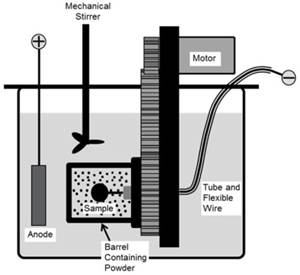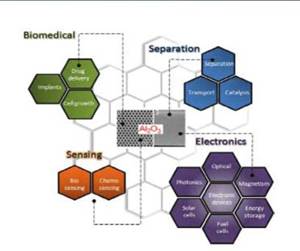Calculating Applied Media Force During Vibratory Finishing
What appear to be identically set-up vibratory bowls will finish identical loads of parts in varying time cycles. This paper offers a new technique to better predict what the operator will produce, by measuring the force applied to the parts. It is the efficiency of that force which controls the efficiency and speed of the refinement cycle.
#surfin #research
Material Database Enables Coating Thickness Measurement Without Calibration
The database from Coatmaster AG has calibrations of over 400 different RAL colors.
#research #measurement-testing
Qualitative Approach to Pulse Plating
In 1986, the AESF published Theory and Practice of Pulse Plating, edited by Jean Claude Puippe and Frank Leaman, the world’s first textbook on pulse plating. A compendium of chapters written by experts in this then-emerging field, the book quickly became the authoritative text in pulse plating. What follows here is the opening chapter, serving as an introduction to the field. Although the field has grown immensely in the intervening 35 years, the reader will find that the material remains a valuable introduction to those looking to advance the field of pulse plating.
#nasf #research
Enhancing the Corrosion Resistance of Electroless Nickel with TCP
Ronatec and CHEMEON have achieved promising early results for bolstering electroless nickel corrosion resistance through the application of a trivalent chromium pretreatment (TCP) top coat.
#research
Decorative Trivalent Chromium Deposits Applied by Barrel Electroplating
With the wide acceptance of the benefits of decorative trivalent chromium plating, there is a growing demand to successfully adapt this technology to barrel plating. Traditionally, trivalent chromium deposits were not commercially viable using barrel electroplating. Factors such as barrel design, cathode contact, anode placement and current density must be considered when providing a trivalent chromium barrel electrodeposit. This presentation outlines trivalent deposits applied in a barrel and examines variables in operating and electrolyte compositions.
#surfin #research
Electro-codeposition of MCrAlY Coatings for Advanced Gas Turbine Applications - 8th Quarterly Research Report
This NASF-AESF Foundation research project report covers the eighth quarter of project work (October-December 2019) on AESF Foundation Research at Tennessee Tech. The objective of the work is to study and optimize the MCrAlY electro-codeposition process to improve the coating oxidation/corrosion performance. In this quarter, the effects of particle density and shape on codeposition were studied. The results show that the shape of the particles plays an important role.
#research #nasf
Correlation Between Electrochemical Behavior and Neutral Salt Fog Corrosion on TCP Coated AA2024
Differences in open circuit potential, electrochemical impedance spectroscopy and Tafel analysis were observed and quantified between the best- and worst-performing processes.
#research #surfin
Best Plating Practices for the Application of Brush Plated Zinc-Nickel
Brush plating is an industrial electroplating process designed for demanding OEM and repair applications, without the use of an immersion tank. This presentation demonstrates the best practices for brush plating zinc-nickel to meet the ASTM standards of hydrogen embrittlement and corrosion protection. From preparatory steps to the application of a trivalent chromium conversion coating, the proper plating techniques needed to meet the customers’ demanding requirements are discussed.
#surfin #research #regulation
Nanostructure of Porous Anodic Aluminum Oxide: Advances in Surface Engineering
Porous alumina membranes of anodic aluminum oxide (AAO) are widely used for the fabrication of various nanostructures and nanodevices. Over the last decade, nanowires, nanotubes and nanodot arrays, have been fabricated by the deposition of various metals, semiconductors, oxides and polymers inside the pores of AAO membranes. These structures are produced by changing the anodization conditions, during electrochemically self -ordering of AAO. One can obtain amorphous barrier-type oxides, crystalline barrier-type oxides or amorphous nanoporous oxides, but fabricating binary nanostructures is challenging. Here, we review methods to achieve diverse binary nanostructure arrays, including material, dimension and morphology.
#research #surfin
Electrochemical Destruction of Perfluorooctanesulfonate in Electroplating Wastewaters - 1st & 2nd Quarterly Report
This is the first report on a new NASF-AESF Foundation research project dealing with PFAS - a critical issue for the surface finishing industry. The project will study an electrochemical, destructive treatment strategy for the remediation of relevant PFASs in electroplating wastewater. The overall objective is to utilize a cost-effective reactive electrochemical membrane (REM) for the removal of PFAS from synthetic electroplating wastewater.
#research #nasf











